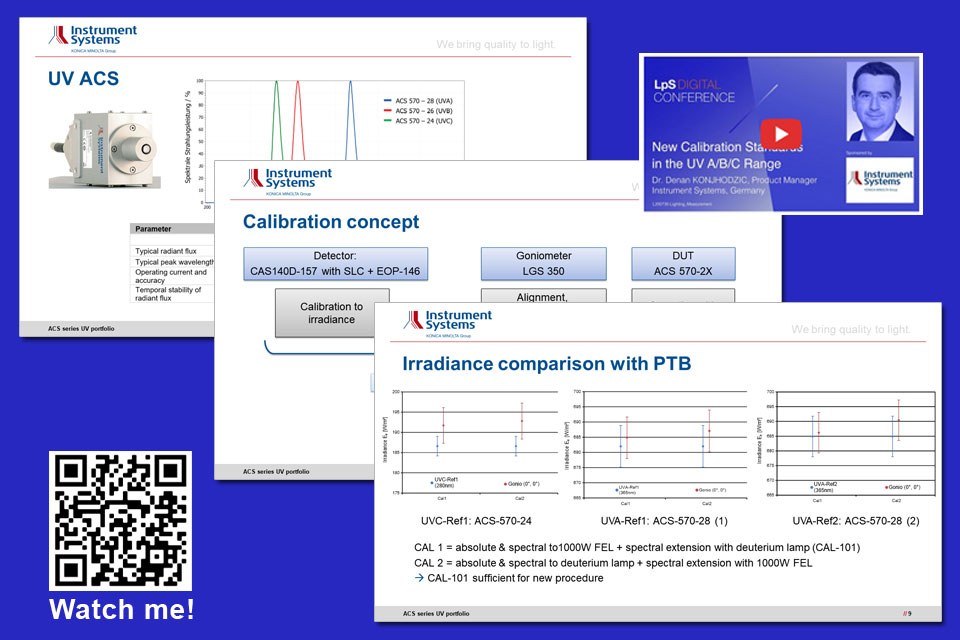New Calibration Standards in the UV A/B/C Range
UV radiation encompasses a very wide wavelength spectrum between 10 and 400 nm and is subdivided in ISO Standard 21348 into three ranges. The UVC range between 100 and 280 nm is currently extremely relevant for air and water disinfection for combating COVID-19. Since the outbreak of the pandemic this has been manifested, among other things, in a sharp increase in the demand for UVC light sources.
The UVA range lies between 315 and 400 nm. Typical applications are UV curing and UV ink printing. Light sources in the UVB range between 280 and 315 nm are used for medical skin treatment. According to their specific field of application, all UV light sources must be precisely measured in terms of radiant flux. This calls for particularly sensitive and reliable measuring equipment.
Instrument Systems offers a complete portfolio for the measurement of UV light sources consisting of high-precision spectroradiometers with very low stray light, PTFE-coated integrating spheres and special calibration standards for the three UV ranges A/B/C.
The most important field of application for UV-LED calibration standards is the monitoring and calibration of UV integrating spheres to radiant flux. With its new ACS-570-UV series, Instrument Systems is the first company in the world to develop temperature-stabilized UV-LED calibration standards that feature radiant flux calibration traceable to the PTB. The ACS series of UV-LED calibration standards is available for the typical peak wavelengths of 280 nm (UVC), 305 nm (UVB) and 365 nm (UVA). The temporal stability of their radiation is exceptionally good and lies at about 0.2% in 12 hours or 1% in 100 hours.
For calibration to radiant flux, an absolute calibration value traceable to a national institute must be available. Hitherto, neither the PTB nor NIST were able to offer such a value for the UVB and UVC ranges. Consequently, Instrument Systems implemented this radiant flux calibration itself. The traceability of UV-ACS to radiant flux is achieved by extremely precise calibration of the spectrometer optical probes used to the irradiance and integrative measurement with a goniophotometer. The extremely low measurement uncertainties (k=2) of only 4.5% (UVC), 3.5% (UVB) and 2% (UVA) for the UV-ACS are comparatively low as in the metrologically unproblematic visible range. With this achievement, Instrument Systems has earned a worldwide position as pioneer in radiant flux calibration in the UVA, UVB and UVC range.
https://www.youtube.com/watch?v=VD76IbiKGfs
About Instrument Systems GmbH:
Instrument Systems GmbH develops, manufactures and markets turnkey solutions for light measurement. Its main products are array spectrometers, imaging photometers and colorimeters. Key applications are LED/SSL and display measurement, as well as spectroradiometry and photometry. Products of the Optronik line for the automotive industry and traffic technology are developed at the Berlin facility. Since 2012 Instrument Systems has been a wholly owned subsidiary of the Konica Minolta Group.
For further details refer to:
Instrument Systems Optische Messtechnik GmbH, Kastenbauerstr. 2, 81677 Munich, Germany
Phone: +49-89-454943-0
E-Mail: sales@instrumentsystems.com
Website: www.instrumentsystems.com

